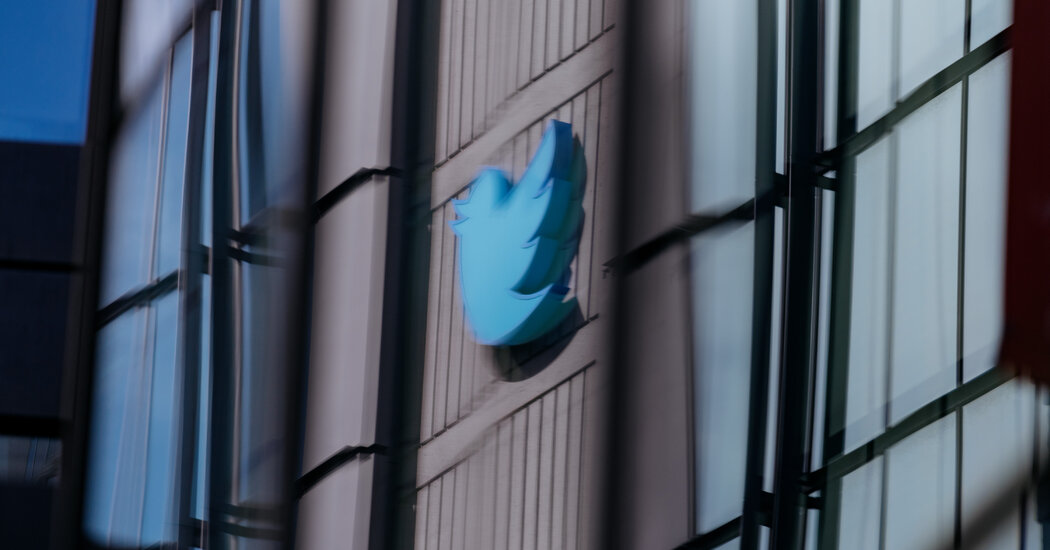SAN FRANCISCO — On Wednesday, newsletter service Substack announced it had built a Twitter competitor. On Thursday, Twitter prevented Substack writers from sharing tweets in their newsletters. And on Friday, Twitter took steps to prevent Substack newsletters from circulating on the platform.
Twitter’s move to whack an upstart was an abrupt departure from the normal behavior of Internet companies and publishers. It also added more grist to critics who say that while Elon Musk, Twitter’s new owner, has often praised the importance of freedom of speech, he’s not shying away from clamping down on competitors and content he doesn’t like .
The new battle with a young company is the latest controversy in Musk’s chaotic holding of Twitter, which he acquired about six months ago. He has laid off more than 75 percent of his employees, has been sued by commercial landlords for failing to pay office rent, and has lost advertisers.
While Mr. Musk has long clashed with mainstream news outlets, Substack’s targeting largely affects independent writers, some of whom rely on Twitter to lure readers into their work.
“This is a huge inconvenience,” said Hunter Harris, a writer who distributes her newsletter, Hung Up, on Substack. “It’s incredibly petty.”
Substack founders Chris Best, Hamish McKenzie and Jairaj Sethi said in a statement that they were “disappointed” by Twitter’s decision to suppress the engagement of tweets containing a Substack link.
“Writers deserve the freedom to share links to Substack or anywhere,” they said. “This abrupt change is a reminder why writers deserve a model that puts them in charge, rewards good work with money, and protects freedom of the press and freedom of expression.”
Mr Musk did not respond to a request for comment.
Twitter and Substack share a major investor, the venture capital firm Andreessen Horowitz, who could be called upon to referee the battle. A spokeswoman for Andreessen Horowitz, who led a $65 million investment round in Substack in 2021 and invested $400 million in Mr. Musk did not respond to a request for comment.
Substack’s new feature, called Notes, mimics Twitter in several ways. It allows users to post short updates and allows other people to like, repost or comment on them. Twitter’s changes on Friday meant Twitter users could still share links to Substack newsletters, but blocked other users from liking or re-sharing those links.
On Elon Musk’s Twitter
Before Mr. Musk acquired it, Twitter sometimes restricted likes and retweets to prevent content that violated its policies from spreading widely on the platform. The measure was used to limit the reach of former President Donald J. Trump’s tweets making false claims about how votes would be counted in the 2020 election.
Twitter has been an important distribution channel for Substack authors, many of whom are independent from traditional media outlets and rely on subscriptions to make money.
Some of Substack’s most popular writers were vocal supporters of Mr. Musk, who gave them special access to search and release the “Twitter Files,” internal communications that the billionaire said demonstrated the biases of Twitter’s previous management. One of those writers, Matt Taibbi, said in a tweet Friday that he was “alarmed” and would be leaving Twitter due to the Substack restrictions and posting on Substack Notes instead.
The changes outraged writers who use both Twitter and Substack to distribute their work. “I can’t explain how absurd and silly this is,” Rohit Krishnan, who writes the Strange Loop Canon newsletter, wrote in a tweet. “Not to mention petty and vengeful.”
Ms Harris said that while Twitter was not driving significant traffic to her newsletter, the restrictions penalized her readers who might want to share links to her work or discuss it on Twitter. Preventing Substack writers from including tweets in their newsletters also took proper credit from Twitter users, she added.
“Any Twitter alternative would be great,” Ms. Harris said of Substack’s move to build a competitor. “I want another place, like Twitter, that isn’t Twitter.”
Other writers said Mr Musk’s latest move contradicted his statements about enabling free speech on Twitter.
“By shutting down access to Substack, Elon is banning access to free and highly informative content on the Internet,” said Simon Rosenberg, who writes a newsletter on politics. “It’s censorship of the worst kind.”
The Substack kerfuffle isn’t the first time Mr Musk has blocked access to competing services on Twitter. In December, he suspended Twitter users, including several journalists, for linking to Mastodon after a Mastodon user shared public information about the location of Mr Musk’s private jet.
He then banned users from sharing links to Facebook, Instagram and several other social media companies, but reversed course after a backlash. Under pressure from supporters who saw the move as an abrogation of his freedom of speech principles, Musk said in December that he would step down as CEO of Twitter once he found a replacement. Mr. Musk has not yet done so.
Mr. Musk has also escalated his long-running feud with the mainstream media. Last Saturday, he revoked The New York Times verification check mark that had distinguished his Twitter account from impersonators. Mr Musk had said Twitter would start removing verification badges from April 1, but most verified accounts have kept their check marks.
On Wednesday, Twitter added a label to NPR’s Twitter account, calling it “state-sponsored media.” The label, which has historically used the platform to identify propaganda outlets, has drawn backlash from press freedom organizations. In emails to an NPR reporter on Wednesday, Mr. Musk acknowledged that the label “may not be right” and added: “We need to fix it.”
This week Mr. Musk made some inexplicable changes to Twitter, replacing the company’s bird logo for a few days with the image of a Shiba Inu dog associated with the cryptocurrency Dogecoin.
On Tuesday, the company also posted the letter “w” in the name “Twitter” on a large public sign outside its San Francisco headquarters, which some observers assumed was a vulgar joke.

